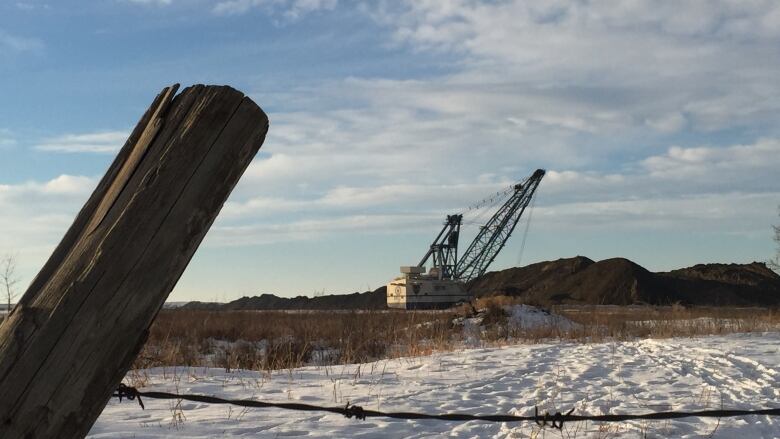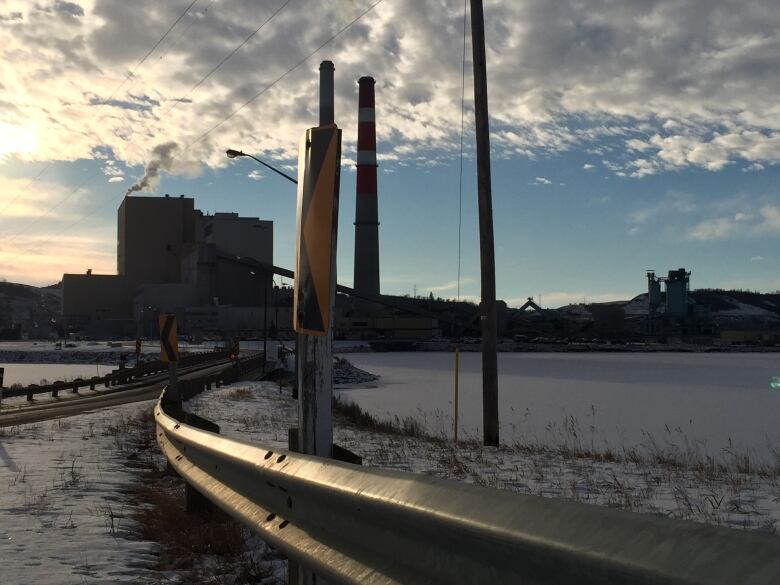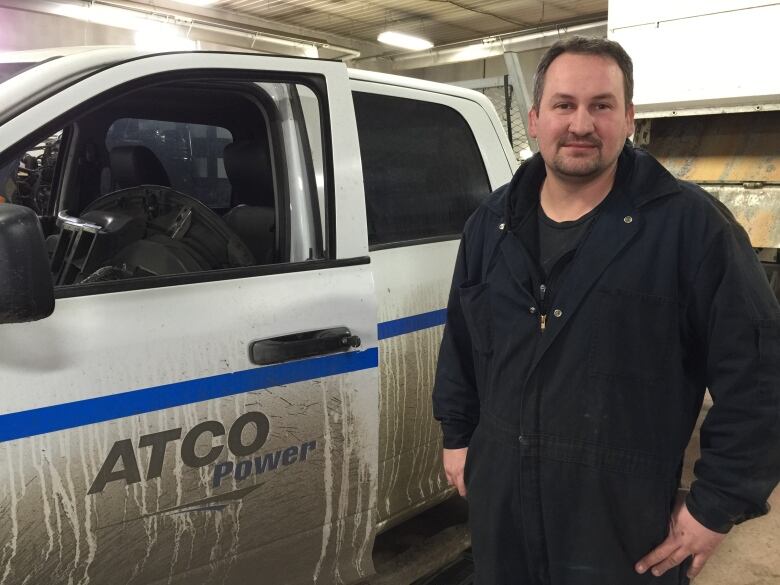Alberta's coal phase-out: How the province plans to kick carbon to the curb
Long the bedrock of Alberta's power generation, the province has vowed to move away from coal by 2030

Alberta is literally and figuratively built on a mountain of coal.
For the past 100years, coal from mines peppered across the provincehave kept the lights on here. A cheap and reliable source of power that gave the province's industries an edge and kept power bills low.
- Alberta coal town faces hazy future as province goes green
- Canadian coal: A by-the-numbers look at the industry
- A timeline ofCanada's coal history
It's a longtradition that continues today.
On a crisp winter day alongthe sun-kissed banks of Battle River, in central Alberta,the province's oldest coal-fired power plant chugsalong. Originally built in 1954,ATCO Power'saptly named Battle River Generating Stationcanturn out689 megawatts of power.

Fuel for the plant is provided bythe nearbyPaintearth mine, operated by the Colorado-basedWestmorelandCoal Company. The mine consists of two open pits, where coal is scraped from just below the ground's surface,and hauled down the narrow country road to the station.
Westmoreland has a contract to supply the Battle River plant with coal until 2022, just eight years before the provincial government has committed to eliminating coal-fired powerplants in Alberta.
On the surface, the goal sounds simple enough. But for Alberta's government, achieving that target by 2030is anything but straightforward.
Coal currently accounts for more than half of the province's electricity and is the lifeblood of many communities and industries across Alberta.
A short drivefrom Battle River,Matt Fedun reaches under the hood of an ATCO Power truck in his garage in Forestburg, Alta. The coal industry has long been an integral part of the tiny village's economy and it is abig reasonFedunsays hecan keep his business open.
"The power plant, the coal mine and agriculture are the three large industries in the area."

There is more energy in Alberta's coal than in all of the province'soil, gas and bitumen combined.And it's cheap. But times have changed and the black rock has become a pariah of sorts. No longer seen as an advantage, it's now viewed asa dirty habit to be kicked.
It's a shift thatworries Fedun. The father of a nine-month-old baby girl, Fedunhas put down roots here, buying a home and a business in recent years.Hewants his little girl to grow up in Forestburg and attend the local K-12 school. But he says thatif the local mine and power plant close, his plans may have to change.
"If those two were to shut down, I would estimate 20per cent of our population would probably leave to look for work elsewhere," Fedun says.
And shut down they will.Quitting coal is precisely what AlbertaEnvironment Minister Shannon Phillips intends to do.
"Almost everyone else is moving off coal now because they see the tremendous health benefits for doing it," she says.

Phillips says the province will replace coal with a mix of natural gas and renewable energy, like wind and solar power, in just14 years.
"What we know now is that we have an abundant supply of natural gas at a low price and we also have an abundant supply of renewable energy."
A recent poll shows that about half of Albertans approve of the shift away from coal. Those that oppose itpredict higher power bills for consumers and ghost towns where thriving communities once stood. ButPhillips says the government plans to help with the transition away from coal.
"We are very, very committed to economic diversification and we know that we are going to have some challenges in some of these communities," she says. "So what we are going to make sure that what we do is make sure that our diversification efforts feed into this transition away from coal."
Of course not everyone believes that transition is necessary. Robin Campbell used toto holdShannon Phillips' job and the former Progressive Conservative cabinet minister thinks giving up on coal is a mistake.
"It is premature today to talk about phasing out an industry that has been a vital part of the growing of Alberta for the last hundred years," says Campbell,who now serves as president of the Coal Association of Canada.

He sayscoal in Alberta has receiveda bad rap.
"One of the things that we are blessed with is that we have a coal that has a very low sulfur content, very low ash and high BTUs so it burns very clean. And actually, when you look at the emissions that are coming out of the Genesee plant and the new Keephills plant at Wabamun, they are as good as natural gas."
Campbell would like to see more effort put into finding ways to burn coal more cleanly or to capture and store the carbon from generators.
But for now at least, investing in carboncapture and storage (CCS)isn't in the government's plans.Instead they will rely on natural gas for a stable supply of power while developing the province's renewable sector.
- Alberta's electricity shift to generate 'up to' 30% from renewables by 2030
- Banff eyes plan to use 100% renewable energy by 2050
- Solar energy set to shine in greener Alberta
Claudio Caizares, an engineering professor withthe University of Waterloo's Centre for Environmental Information Technology, saysthe province'splan isa goodonefrom an environmental perspective, butnot necessarily an economic one.
"If you look at the problem fromcost [alone], gas and coal is the solution and there is not much of a debate there; if you talk to a banker, they would say 'why would you invest in anything else,'" he says.
But Caizaresaddsthe environmental problems associated with burning coal can no longer be ignored. He says there is an acknowledgement that the time has come to make the switch to greener sources of power generation.
"The electricity system that is most advanced inthis sense is the German system in terms of trying to transform solar and wind into firm capacity for the system."
Germany now gets about a quarter of its power from renewable sources like wind and energy,up from just fourper cent in 1990.
But while the Germans are ramping up their use of renewable energy,they alsorely heavily on dirty, brown lignite coal, according toDavid Jacobs, with the Berlin-based firm International Energy Transitions.

"Germany is talking about phasing out coalbut in Germany it is much more difficult, probably closer to your situation in Alberta, because the share of coal is pretty large. It [was] about 80per cent in the 1960s and now it is about 50per cent or a little bit more."
Jacobs says that Germany needs to fully phase out its use of coal by 2040 in order to meet its climate goals but has no real plan to do it.
It is no easy task and proof that even the "greenest" jurisdictions are struggling to find an affordable stable replacement for hydrocarbons.
And Germany isn'talone:fiveof the sevenrichest countries in the world increased the amount of coal they burned between 2009 and 2013. Along with Germany, England, France, Italy and Japanincreased the amount of coal they burned by about15 per cent and have plans to increase that total even more in the coming years.
The solution, at least in the shortterm, could be finding a way to burn coal more cleanly, according to Wolfgang Rolland.Rolland is with Vattenfall, a Swedish power company that operates several lignite plants in Germany, where the company recently rana successful CCSpilot project.
"We were sure that we could capture 95 per cent of the CO2, and we were sure that it is comparably cheaper to many other technologies," he says.
For now, Rolland says issues aroundstorage and reliability for renewable energymake coal a necessityin Germany and other industrialized countries. So he says the goal should beto make burning that coal as clean as possible until it can be replaced by renewable energy.

According to Rolland,thatis whyVattenfallhas partnered with SaskPower to work on its Boundary Dam CCSproject here in Canada.
"There will be, over the long term, a reduction and fade out of lignite for sure.And what we have at the moment is a heavy debate in Germany over how long this will last."
In Alberta, that answer is clear the clock is ticking for coal.
Back in Forestburg, Alta.,Matt Fedun says that firm deadline means an unsettledfuture for him.
"It is very uncertain and it's hard to deal with day-by-day.You just have to put it in the back of your mind and keep workingand away you go."












_(720p).jpg)


 OFFICIAL HD MUSIC VIDEO.jpg)
.jpg)



























































































